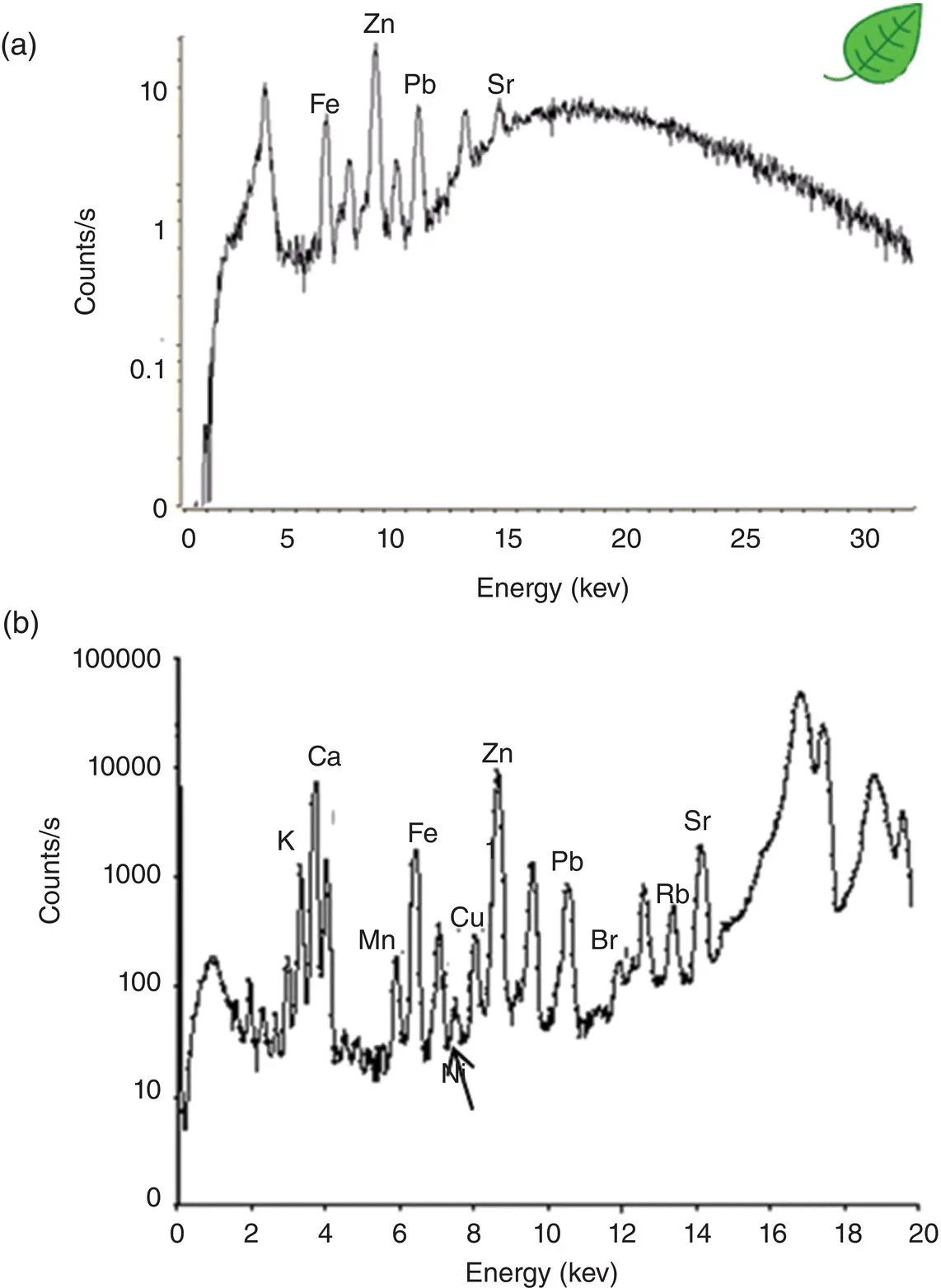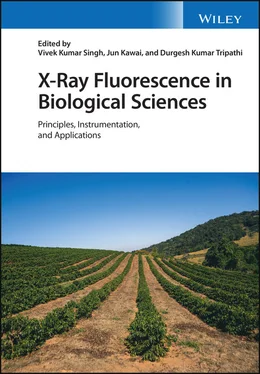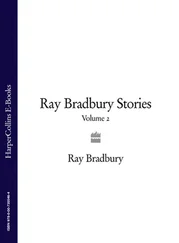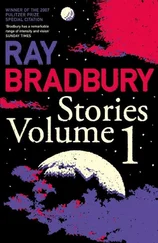X-Ray Fluorescence in Biological Sciences
Здесь есть возможность читать онлайн «X-Ray Fluorescence in Biological Sciences» — ознакомительный отрывок электронной книги совершенно бесплатно, а после прочтения отрывка купить полную версию. В некоторых случаях можно слушать аудио, скачать через торрент в формате fb2 и присутствует краткое содержание. Жанр: unrecognised, на английском языке. Описание произведения, (предисловие) а так же отзывы посетителей доступны на портале библиотеки ЛибКат.
- Название:X-Ray Fluorescence in Biological Sciences
- Автор:
- Жанр:
- Год:неизвестен
- ISBN:нет данных
- Рейтинг книги:5 / 5. Голосов: 1
-
Избранное:Добавить в избранное
- Отзывы:
-
Ваша оценка:
- 100
- 1
- 2
- 3
- 4
- 5
X-Ray Fluorescence in Biological Sciences: краткое содержание, описание и аннотация
Предлагаем к чтению аннотацию, описание, краткое содержание или предисловие (зависит от того, что написал сам автор книги «X-Ray Fluorescence in Biological Sciences»). Если вы не нашли необходимую информацию о книге — напишите в комментариях, мы постараемся отыскать её.
Discover a comprehensive exploration of X-ray fluorescence in chemical biology and the clinical and plant sciences X-Ray Fluorescence in Biological Sciences: Principles, Instrumentation, and Applications
X-Ray Fluorescence in Biological Sciences: Principles, Instrumentation, and Applications
X-Ray Fluorescence in Biological Sciences — читать онлайн ознакомительный отрывок
Ниже представлен текст книги, разбитый по страницам. Система сохранения места последней прочитанной страницы, позволяет с удобством читать онлайн бесплатно книгу «X-Ray Fluorescence in Biological Sciences», без необходимости каждый раз заново искать на чём Вы остановились. Поставьте закладку, и сможете в любой момент перейти на страницу, на которой закончили чтение.
Интервал:
Закладка:
Usually in WDXRF spectrometers the analysis of different elements is carried out in a sequential way by changing synchronously the orientation of the goniometer‐controlled detection system to catch the discrete wavelengths corresponding to each chemical element. Therefore, they are not usually employed for multi‐elemental analysis of unknown samples and their use in vegetation samples analysis is not very common. Nevertheless, one of the benefits of WDXRF systems is the possibility to accurately determine light elements such as P, S, Cl which can play an important role in vegetation metabolism and are difficult to determine with other atomic spectroscopic techniques. For instance, WDXRF was used by Barua and co‐workers [6] to determine the concentration of P, K, S, Ca, Fe, Mg, Cl, and Na in seeds of chili for nutritional purposes. Other applications include the determination of specific elements (Nd, Pb, Th, and U) in fungi [7] or the combined determination of light and some trace elements in vegetation species collected in mining environments [3]. In general, quantitative analysis by WDXRF is performed by using the empirical calibration method. However, it is sometimes difficult to get sufficient reference materials with matrices similar to the target samples. In those cases, synthetic standards made of spiked cellulose with the elements of interest could provide a good option to simulate the vegetal matrix and to produce suitable calibration curves for quantification purposes [3].
Unlike WDXRF systems, conventional 2D‐EDXRF spectrometers only consist of two basic units, the excitation source and the detection system. Using this configuration, all the X‐rays emitted by the samples are collected at the same time in the detector and thus, 2D‐EDXRF systems can provide simultaneous multi‐elemental information of the sample. For this reason 2D‐EDXRF are widely used in environmental sample analysis, including vegetation samples [8]. Moreover, since the development of lower power ceramic micro‐focus X‐ray tubes and air‐cooled silicon drift detectors, low‐cost benchtop and even portable 2D‐EDXRF systems are commercially available and have been successfully used in the field of vegetation analysis [9, 10]. Nevertheless one of the main drawbacks of 2D‐EDXRF systems is the limited sensitivity for trace and ultra trace elements including some important environmentally‐relevant metals such as Pb and Cd. This is mostly due to the high spectral background arising from the elevated degree of scattering of the X‐ray beam by light organic matrices. This background can be decreased very significantly by using polarized EDXRF systems in which a secondary target is interposed between the X‐ray tube and the sample configuring a Cartesian geometry (tri‐axial, 3D) between source, sample and detector. With this geometry, a significant decrease of the background is achieved because the exciting radiation is polarized when scatter occurs through the right angle and cannot then be scattered a second time into the detector. Therefore, the sensitivity and detection limits for minor and trace elements are improved as compared with those associated with conventional 2D‐EDXRF spectrometers. In Figure 2.2, as an example, spectra obtained in the analysis of a leaf sample using a 2D‐EDXRF spectrometer (W X‐ray tube) and a 3D‐EDXRF spectrometer (W X‐ray tube and Mo secondary target) are displayed. An additional advantage of the use of secondary targets is that they can be used to modify the energies of the beam impinging the samples but in a simpler way. With the right target, we can selectively excite the elements of the sample and, sometimes, act as a near‐monochromatic secondary source of somewhat higher energy than the absorption edges of the analytical lines of the requested analytes.

Figure 2.2 Spectra acquired in the analysis of a leaf sample collected in a contaminated mining area using (a) 2D‐EDXRF system(W X‐ray tube) and (b) 3D‐EDXRF system(W X‐ray tube and Mo secondary target).
Therefore, with the combination of polarization and the use of different secondary targets, a system can be designed to produce a range of excitation conditions adequate for different groups of elements. For example, for the determination of light elements (Na, Mg, Al, Si, P, and S) in spruce needles it was adequate to use a highly oriented pyrolytic graphite (HOPG) crystal as a secondary target [11]. Meanwhile, for determination of elements such as Pb, Fe, Cu, and Zn in different vegetation specimens, a secondary target made of Zr proved to be a good choice [12]. Targets made of pure metals (i.e. Mo, Zr, Co) have proven to be adequate for the excitation of specific elements or a reduced group of neighboring elements. The use of an Al 2O 3target (Barkla scatter) in a 3D‐EDXRF system was also successful for the determination of low amounts of Cd (<1 mg/kg) in vegetation samples. However, in this application the use of a Gd X‐ray tube and a Ge semiconductor detector was necessary in order to allow the determination of Cd through the Cd‐K lines overcoming in this way the reduced sensitivity and the spectral interferences issues that occur when using L lines for the determination of heavy elements such as Cd [12].
In the last 20 years, technological improvements in XRF instrumentation have allowed an enhancement of analytical capabilities as well as the commercialization of portable systems, opening up interesting applications. In this sense, the development of miniature X‐ray tubes to substitute radioactive isotope sources (i.e. 55Fe, 109Cd, 241Am) in portable‐XRF systems (p‐EDXRF) was a successful insight [5]. It is also interesting to highlight the use of source modifiers (primary filters composed of different metal layers) between the X‐ray source and the sample in some hand‐held units to improve limits of detection for elements of interest. In a study by Marguí and co‐workers [13] it was demonstrated that for Ni, Cu, Zn, and Pb determination, the best results, in terms of signal‐to‐noise ratio, were obtained using a filter composed of (25 μm Ti) + (300 μm Al) + (150 μm Cu) meanwhile for Cd determination a filter composed of (25 μm Ti) + (200 μm Al) + (75 μm Cu) was the best choice. p‐EDXRF instrumentation also present low sensitivity for light elements due to the attenuation of low energy fluorescence X‐rays by air. To overcome this problem, some portable instruments are equipped with a partial vacuum device (Analytical Methods Committee, Royal Society of Chemistry 2008) or measurements can be also performed under a helium atmosphere. This last approach was applied for instance in plant nutrient analysis using a portable XRF analyzer [14].
The main advantage of p‐EDXRF is the possibility to get real‐time information in the field through in‐situ analysis with limited operational costs in comparison to laboratory 2D‐EDXRF units. This fact has led to the widespread adoption of p‐EDXRF systems by governmental agencies, environmental consultancies, and research institutions for multi‐elemental analysis of environmental samples in the last years [15–17]. Despite the fact that handheld systems have been mostly employed for the rapid in‐situ analysis of soils and sediments to facilitate elemental mapping at the field scale, their application for multi‐elemental analysis of plant materials has also been documented. For instance, p‐EDXRF was employed to scan a large set of vegetation matrices (i.e. thatch, deciduous leaves, grasses, tree bark, and herbaceous plants) to study the potential metal contamination of a smelter‐impacted area [18]. Hand‐held units also proved to be very effective in providing useful data for plant nutrition status, crop requirements, and potential deficiencies, leading to more effective fertilization programs. In fact, a recent study demonstrated a similar analytical performance between laboratory 2D‐EDXRF and p‐EDXRF systems with regards to multi‐elemental (P, K, Ca, S, Fe, Mn, and Si) analysis of sugar cane varieties [19].
Читать дальшеИнтервал:
Закладка:
Похожие книги на «X-Ray Fluorescence in Biological Sciences»
Представляем Вашему вниманию похожие книги на «X-Ray Fluorescence in Biological Sciences» списком для выбора. Мы отобрали схожую по названию и смыслу литературу в надежде предоставить читателям больше вариантов отыскать новые, интересные, ещё непрочитанные произведения.
Обсуждение, отзывы о книге «X-Ray Fluorescence in Biological Sciences» и просто собственные мнения читателей. Оставьте ваши комментарии, напишите, что Вы думаете о произведении, его смысле или главных героях. Укажите что конкретно понравилось, а что нет, и почему Вы так считаете.











